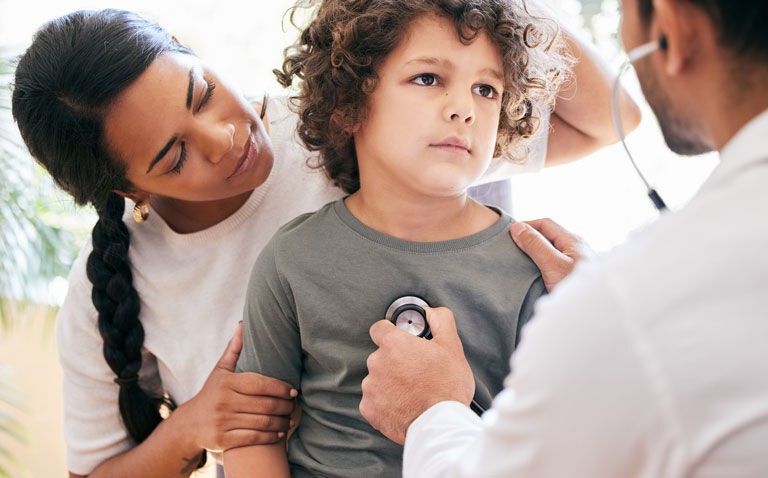Multiplex PCR testing for respiratory pathogens does not reduce antibiotic prescribing among acutely ill children in comparison to usual care
The use of multiplex PCR for point-of-care testing for respiratory pathogens does not result in a significant reduction of antibiotic use among acutely ill children presenting at an emergency department compared to usual care. This was the conclusion of a randomised, controlled trial by Finnish researchers.
Acute respiratory tract infections are one of the leading causes of emergency department visits and are often due to viral pathogens. Moreover, children suffering from infectious diseases of either bacterial and viral origin, are often treated with empirical antibiotics due to a similarity in the presenting symptoms.
For example, in a study of pharyngitis presentations in children, there was evidence of substantial antibiotic overuse and inappropriate antibiotic selection. Such over-prescribing highlights the need for strategies to guide prescribing decisions and one such approach is the use of multiplex PCR point-of-care testing.
In fact, one randomised trial in children 3 to 36 months of age with febrile acute respiratory tract infections, found that among those assigned to rapid respiratory viral testing on admission, there was a significant reduction in antibiotic prescription after discharge from the emergency department.
Based on these findings, in the present study, the Finnish team hypothesised that the use of a rapid multiplex PCR point-of-care testing panel for respiratory viral and bacterial pathogens would reduce the prescribing of antibiotics in acutely ill children.
Upon arrival at an emergency care department, children aged 0 to 17 years with a fever and or respiratory symptoms including tachycardia, shortness of breath, apnoea, were recruited and randomised 2:1 to either multiplex PCR point-of-care testing (which tested for 18 respiratory viruses and 3 bacteria) or usual care, where the patients were only tested using the multiplex system according to the clinical judgement of the treating physician.
For the intervention group, the multiplex PCR test results were available within 70 minutes but not until the following day for the control group.
The team set the primary outcome as the proportion of children with any antibiotic therapy that was started or on-going in the emergency department. For their secondary outcome, the team compared the number of diagnostic and radiographic imaging procedures undertaken in the two groups.
Multiplex PCR point-of-care testing and antibiotic use
A total of 1243 children were included of whom, 829 with a mean age of 3 years (55.9% male) were randomised to multiplex PCR testing. Among these children, 18.7% had only fever, where as 41.7% had both a fever and respiratory tract symptoms.
A prescription for antibiotics was given to 27.3% of children assigned to the multiplex PCR testing group and 28.5% of those in the control arm (risk ratio, RR = 0.96, 95% CI 0.79 – 1.16).
For the secondary outcome, there were no differences in either the number of diagnostic tests or imaging and overall emergency department costs were similar.
The authors concluded that systematic testing for respiratory pathogens in an emergency department had limited impacted on clinical decision-making over whether or not to prescribe antimicrobial therapy.
Citation
Mattila S et al. Effect of Point-of-Care Testing for Respiratory Pathogens on Antibiotic Use in Children: A Randomized Clinical Trial JAMA Netw Open 2022










